Capital Unknown Government Monarchy Historical era Ancient Date dissolved 494 AD | Established 2nd century BC | |
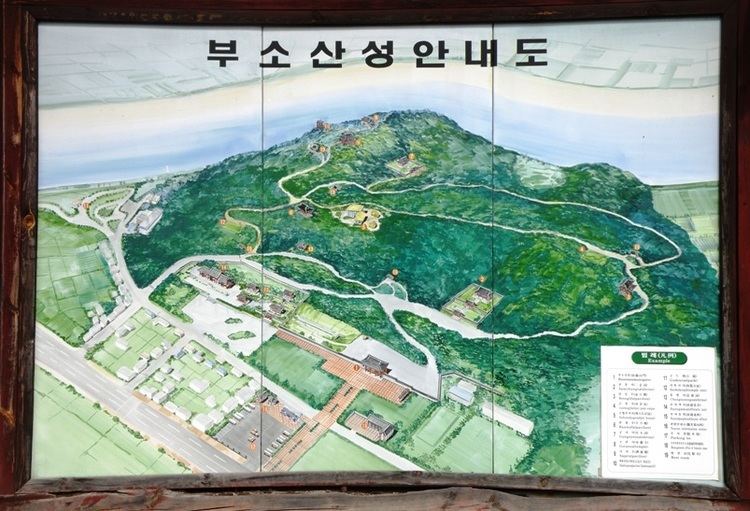 | ||
Buyeo or Puyŏ (Korean: 부여; Hanja: 夫餘 [pu.jʌ]) was an ancient kingdom located in parts of southern Manchuria (Northeast China) and northern Korea, from around the 2nd century BC to 494. Its remnants were absorbed by the neighboring kingdom of Goguryeo in 494. Both Goguryeo and Baekje, two of the Three Kingdoms of Korea, considered themselves its successor nation.
Contents
- Aerial korea ep 4 buyeo
- Early history
- Under attack
- Fall
- Dongbuyeo
- Jolbon Buyeo
- Culture
- Language
- Legacy
- References
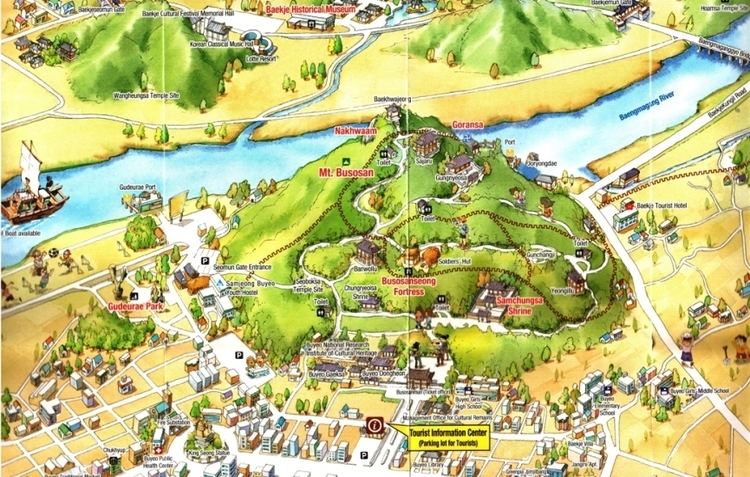
Although records are sparse and contradictory, it is speculated that in 86 BC, Dongbuyeo (Eastern Buyeo) branched out, after which the original Buyeo is sometimes referred to as Bukbuyeo (Northern Buyeo). Jolbon Buyeo was a small tribal state situated in North of the Korean peninsula and Manchuria. According to Samguk Sagi, in 504, the tribute emissary Yesilbu mentions that the gold of Buyeo can no longer be obtainable for tribute as Buyeo has been driven out by the Malgal and the Somna and absorbed into Baekje. It is also shown that the Emperor Xuanwu of Northern Wei wished that Buyeo would regain its former glory. In 538, long after the fall of Buyeo, Baekje renamed itself Nambuyeo (Southern Buyeo).

"Buyeo" may also refer to a Baekje surname or Buyeo County in South Korea.
Aerial korea ep 4 buyeo
Early history
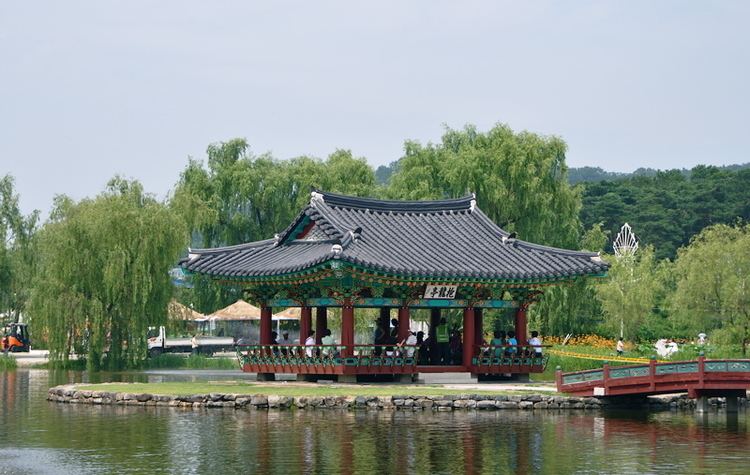
The founder of the Buyeo kingdom was probably Dongmyeong, having no relations with Jumong who founded Goguryeo. After its foundation, Hae Mo-su (解慕漱:the son of heaven) brought the royal court to his new palace, and they proclaimed him King. Hae Mo-su called his new kingdom "Buyeo" to show that he was the true successor to the Kings of Buyeo. Generally, this Buyeo is often known as "Bukbuyeo" (Northern Buyeo).
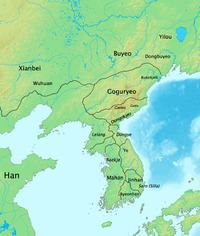
Jumong is described as the son of Hae Mo-su and Yuhwa (柳花), who was a daughter of the Habaek (河伯).
Under attack
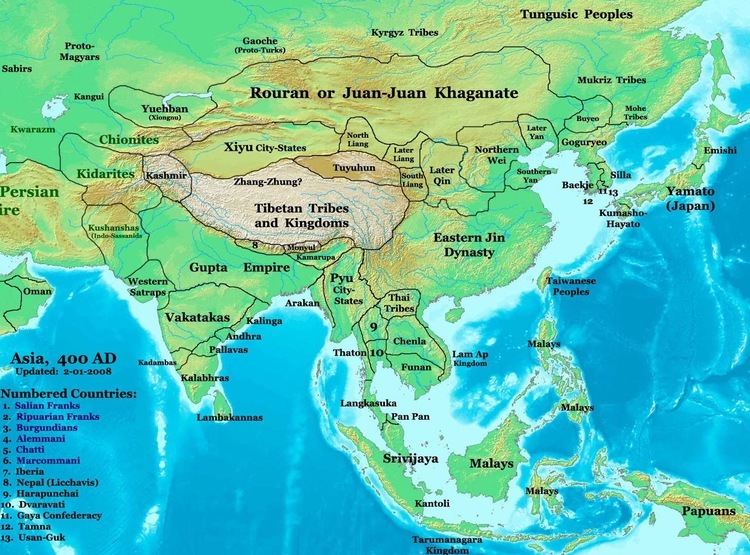
In the early 3rd century, Gongsun Du, a Chinese warlord in Liaodong, supported Buyeo to counter Xianbei in the North and Goguryeo in the east. After destroying the Gongsun family, the northern Chinese state of Cao Wei sent Guanqiu Jian to attack Goguryeo. A squad of the expeditionary force led by Wang Qi (王頎), the Grand Administrator of the Xuantu commandery, was welcomed by Buyeo. It brought detailed information of the kingdom to China.
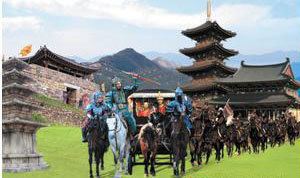
After that, Buyeo was torn between big powers, and ravaged during the waves of movement of northern nomadic peoples into China. In 285 the Murong tribe of the Xianbei, led by Murong Hui, invaded Buyeo, pushing King Uiryeo (依慮) to suicide, and forcing the relocation of the court to Okjeo. Considering its friendly relationship with the Jin Dynasty, Emperor Wu helped King Uira (依羅) revive Buyeo.
Goguryeo's attack sometime before 347 caused further decline. Having lost its stronghold on the Ashi River (within modern Harbin), Buyeo moved southwestward to Nong'an. Around 347, Buyeo was attacked by Murong Huang of the Former Yan, and King Hyeon (玄) was captured.
Fall
A remnant of Buyeo seems to have lingered around modern Harbin area under the influence of Goguryeo. Buyeo paid tribute once to Northern Wei in 457-8, but otherwise seems to have been controlled by Goguryeo. In 494, Buyeo were under attack by the rising Wuji (also known as the Mohe, 勿吉, 물길), and the Buyeo court moved and surrendered to Goguryeo.
Dongbuyeo
According to the Samguk Sagi and other accounts, the kingdom of Dongbuyeo (86 BC – 22 AD) branched out to the east of Bukbuyeo, near the land of Okjeo. Bukbuyeo's King died, and his brother Hae Buru succeeded him and became the king of Bukbuyeo.
Hae Buru found a golden frog-like child under a large rock. Hae Buru named the child Geumwa, meaning golden frog, and later made him crown prince.
Geumwa became king after Hae Buru's death. Geumwa met Yuhwa, the daughter of Habaek, and brought her back to his palace. She was said to have been impregnated by sunlight and to have laid a golden egg. Geumwa made many attempts to destroy the egg, but failed, and returned the egg to Yuhwa. From the egg hatched Jumong, who later founded the kingdom of Goguryeo. Jumong later fled to Jolbon Buyeo after numerous assassination attempts by the seven sons of King Geumwa.
Geumwa's eldest son Daeso became the next king. Daeso attacked Goguryeo during the reign of its second King Yuri. Goguryeo's third king Daemusin attacked Dongbuyeo and killed Daeso. After internal strife, Dongbuyeo fell, and its territory was absorbed into Goguryeo.
Contrarily, Gwanggaeto stele mentioned Dongbuyeo as a vassal state of Goguryeo, even long after its destruction. Since the chronology is inconsistent with the Samguk Sagi, the Dongbuyeo mentioned in the stele is widely speculated by historians to have been a revival movement of Dongbuyeo, formed around 285.
Jolbon Buyeo
Many ancient historical records indicate the "Jolbon Buyeo" (卒本夫餘, 졸본부여), apparently referring to the incipient Goguryeo or its capital city.
In 37 BC, Jumong became the first king of Goguryeo. Jumong went on to conquer Okjeo, Dongye, and Haengin, regaining some of Buyeo and former territory of Gojoseon.
Culture
The Buyeo were agricultural people who occupied the vastest plain in Manchuria. Their manners and customs were mostly recorded in Sanguo Zhi (Records of Three Kingdoms), ancient Chinese historical text. They already maintained a complex social structure and named official titles after animals.
Language
The Buyeo languages are a hypothetical language family that would relate the language of Buyeo with the languages of Goguryeo and Baekje, and possibly place them together as a family under the hypothetical Altaic family. However, the hypothetical is unverified and thought unproven. According to Chinese historical records, the language of Buyeo is similar to that of Goguryeo, but their languages are completely different from Malgal.
The Buyeo language itself is unknown except for a small number of words, but thought to have been similar to languages of Gojoseon, Goguryeo and Eastern Okjeo.
Legacy
In the 1930s, Chinese historian Jin Yufu developed a linear model of descent for the people of Manchuria and northern Korea, from the kingdoms of Buyeo, Goguryeo, and Baekje, to the modern Korean nationality. Later historians of Northeast China built upon this influential model.
Goguryeo and Baekje, two of the Three Kingdoms of Korea, considered themselves successors of Buyeo. King Onjo, the founder of Baekje, is said to have been a son of King Dongmyeongseong, founder of Goguryeo. Baekje officially changed its name to Nambuyeo (남부여, 南夫餘 "South Buyeo") in 538.
